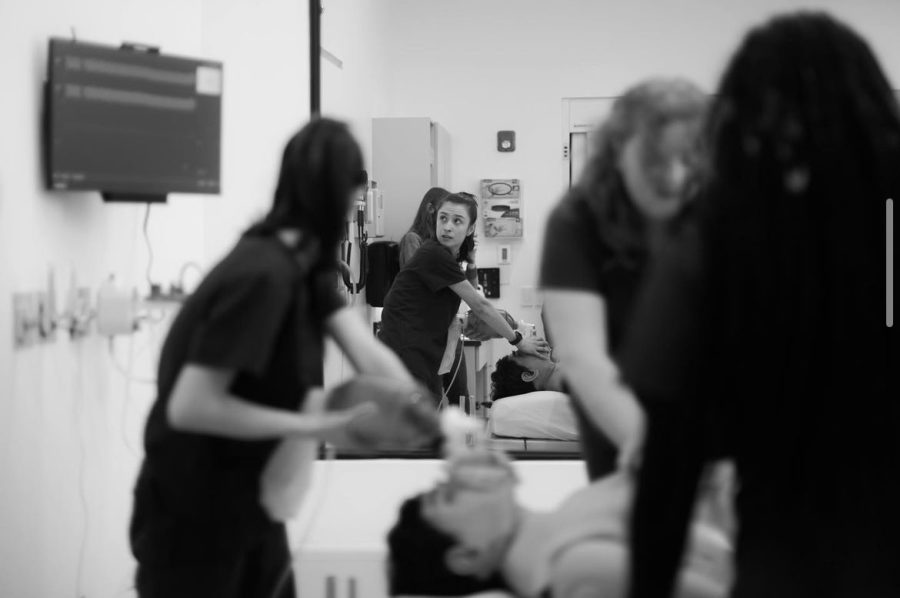A tip for future nurses: remember empathetic communication
Simmons Nursing students in the Nursing Simulation Lab.
May 31, 2023
As I close my junior year, I’m three-quarters closer to launching my nursing career. I’ve started thinking about what kind of nurse I want to be—not in what specialty I want to pursue, but in how I interact with my patients. As I’ve heard repeated by professors and instructors, often it’s not the message, but how we convey it that makes the biggest impact on our patients’ confidence and perceived support. Above all, we should be communicating with empathy.
“Hey momma, how are you doing? How’s the baby? How is breastfeeding going?” went the tirade of questions asked by my clinical instructor and the nurses in the postpartum unit. Many of these new “mommas” looked so tired and frightened, I doubted they felt secure with their new title yet. They were hardly given space to share how they actually felt.
The lactation consultant I followed launched into her script with several patients before even catching herself to ask what the baby’s name and sex were. Referring to patients as “momma,” “honey,” or simply calling the baby “baby” shouldn’t be a substitute for knowing your patient’s name. Not to mention, it can make your patient feel uncomfortable or disrespected.
Busy schedules leave little space to impart all of our patient education, leading nurses to fall back on well-meaning, but impersonal conversation, endearing terms, and overbearing amounts of information.
Our tone of voice, how we address our patients, and our body language are just as important as any of the technical care (medications, IVs, wound care, etc.) we provide for our patients. Not taking the time to slow down and understand what our patients are going through emotionally, not just physically, builds a condescending persona. It sends the message that we don’t have the time to really get to know you, that we know more and you know less, and that ultimately we decide what’s best for you.
Our job requires us to fly from room to room, task to task, but our patients shouldn’t suffer as a consequence. A 2018 systematic review of empathetic and positive communication by nurses shows that these tools can consistently reduce patient pain, anxiety, and physical symptoms by small amounts. So how do we do it?
The Memorial Sloan Kettering Cancer Center created a Communication Skills and Training (CST) Module to teach just that. It first helps to understand that there are different kinds of empathy: affective (taking on the feelings of others), cognitive (understanding how the other person feels), and behavioral (acting upon that cognitive understanding). It’s easy to see how affective empathy could lead to burnout. Cognitive and behavioral empathy relies on understanding and action more than absorbing the feelings of others.
Specific skills include acknowledging and encouraging the expression of feelings, asking open-ended questions, clarifying or restating patient comments, using praise and positivity, and endorsing questions. Rather than splattering in an array of niceties, these conversations show how invested we actually are. This builds a far more caring and approachable persona for a nurse.
Of course, we’re busy, overworked, and understaffed. We can’t deny that hospitals capitalize on the number of patients they carousel through our doors. But before we get too far into our nursing careers, let’s remember why we chose them in the first place.
In my practice, I hope to give patients the empathy they deserve and empower them to leave the hospital with the confidence to manage their own care. Each hospital interaction shapes what our patients think of themselves: whether they are worthy of respect, personal autonomy, and ultimately whether they can care for themselves. For that, empathetic communication is key.




















